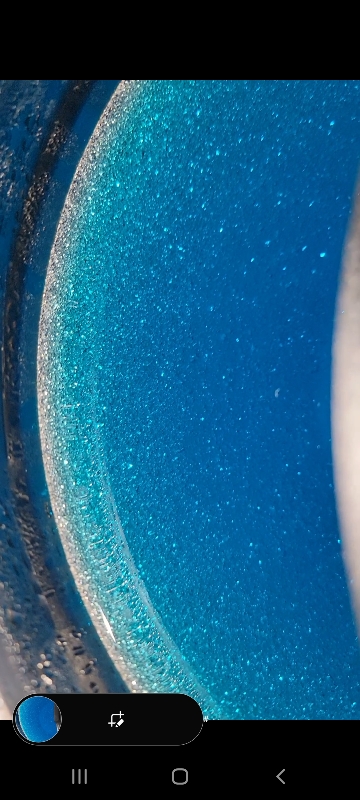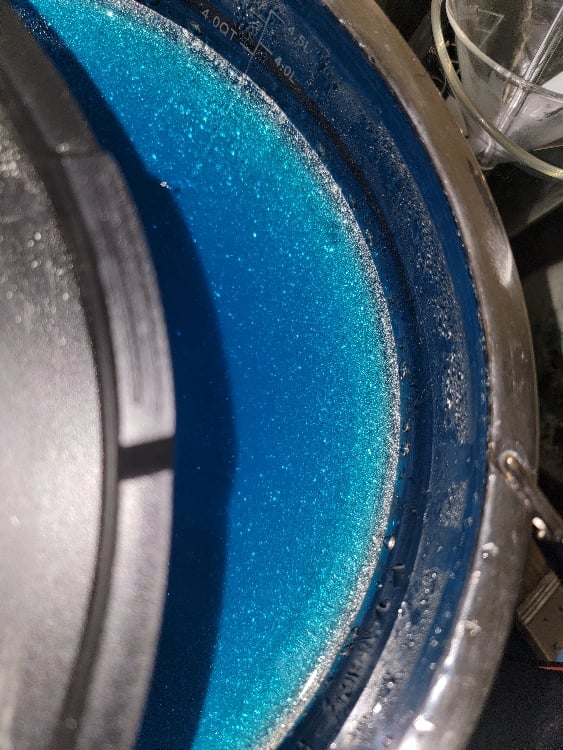Here's an update - using a new (larger) cell.
14qt stainless steel pot. There are some rivets for the handle 1.5-2 inches down, so the final filled volume is closer to 11-12qts.
I have 75ozt of Sterling silverware poured into bars, with the flat sides touching for (hopefully) decent contact. There are 2 bars on the bottom of the basket for extra surface area, and the third with the small tongue resting on top, with the anode clip.
The basket is just a Tupperware with some holes drilled into the bottom, and dacron filter bag - double lined. The electrolyte fills the bottom 1/4 to 1/2 inch of the basket.
The anode bars are about 4-5 inches from the sides of the pot, and probably closer to 6 or 7 from the bottom. Thus, I'm noticing the sides plating with crystals quicker, but still some growth on the bottom.
The electrolyte was made by taking 1/3 of the total sterling supply I had for this run and dissolving it in nitric - about 1200g. Then cemented with copper. I rinsed the cement with nearly 3 gallons of boiling distilled water but it still had a slight blue green tint. I got the rinse quite clear and light, and figured a little extra copper would be okay for the electrolyte as I had seen references to 30g/l copper addition on the forum here.
Well, it ended up being more copper nitrate solution left than I had hoped, and the solution was quite dark blue once redisolved in nitric. I also work out of my garage - fume hood and safety measures in place - and had to open it for a refrigerator delivery (for the inside of the house). This made the solution darker, as I believe the strong Florida UV rays converted some of the silver nitrate. I was worried at this point my electrolyte wouldn't work, but decided to give it a shot.
I set up the cell this morning, turned it on, and seem to have a good current. 3-4 volts hovering at .85-1.4 amps. Happy with that at least and the initial few hours have been promising.
Ultimately I only have about 95g/l of silver in the electrolyte, so I imagine I will be replenishing it quickly here and am keeping a keen eye on it. That was another mistake as I was aiming for 100g+/l but was trying to avoid excess nitric and left some of the cement undissolved while preparing it.
This is my first time with a batch this large going into a cell of this size. I have my learnings in my notebook already, and will surely have more to come. But I'm posting just to share and hopefully it'll elicit further tips as well.
Pics are of the cell wall after 4 hours, cell itself, anode bars in basket, (too dark) blue electrolyte, cast sterling anode bars, sterling flatware itself, and a bonus pic of some finished bars from my last round - tested 999 fine at jewelry store. Will keep practicing my pouring ability. Plus 8.5g of gold from some gold filled stuff I had - first ever gold processing for me last month.
Thanks!
- Connor
Sent from my SM-G998U using Tapatalk

















